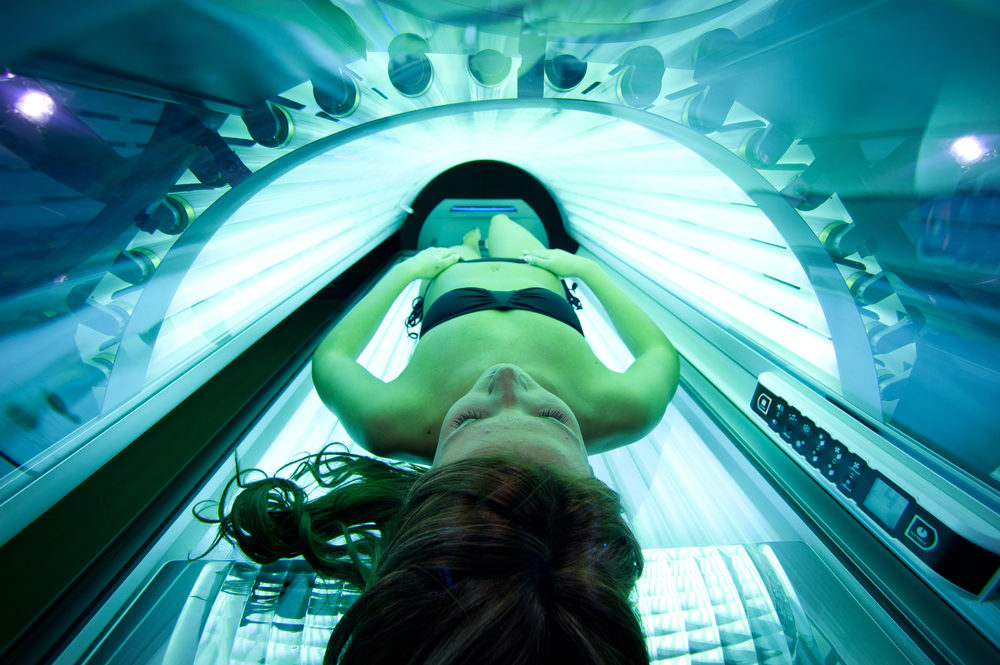Tanning May Increase Women’s Risk Of Endometriosis: Study

There have been long-standing concerns about the risk of skin cancer from indoor tanning. However, a new study suggests that the popular practice may also increase a woman’s risk of endometriosis.
Prior research has suggested an association between endometriosis and an increased risk of melanoma, the deadliest form of skin cancer. Endometriosis has also been commonly diagnosed among women who sunburn easily.
In findings published this month in the journal Human Reproduction, researchers with the University of Arizona found that tanning bed use during high school or college, less than six times per year, was linked to a moderately increased risk of endometriosis. However, that risk increased as the number of tanning sessions increased, with those using tanning beds more than six times a year between the ages of 15 and 35 facing a 30% increased risk of cancer.

Did You Know?
Change Healthcare Data Breach Impacts Millions of Customers
A massive Change Healthcare data breach exposed the names, social security numbers, medical and personal information of potentially 100 million Americans, which have now been released on the dark web. Lawsuits are being pursued to obtain financial compensation.
Learn MoreThe study used data from the Nurses’ Health Study II, a prospective cohort of 116,000 female U.S. nurses ages 25 to 42 years old first enrolled in 1989. Participants completed self-administered biennial questionnaires through June 2015.
The researchers investigated self-reported measures of recreational sun exposure, tanning bed exposure and residential ultraviolet light exposure in childhood and adulthood. They then compared that information to confirmed endometriosis cases among premenopausal white women.
According to the findings, nearly 4,800 incidents of endometriosis were confirmed among study participants. The researchers found that the number of sunburns suffered during adolescence and the percentage of time using sunscreen in adulthood were also positively associated with a risk of endometriosis. However, the findings indicate living in sunnier climates during teen and young adult years lead to a reduced risk of endometriosis.
Researchers speculate tanning bed use in early adulthood increases endometriosis risk through the harmful effects of ultraviolet A wavelength exposure, which is high intensity exposure. This can lead to increased cell damage and weakened immune function.
On the other hand, residential ultraviolet B wavelength exposure emitted by the sun may reduce the risk of endometriosis by increasing vitamin D production, which has an anti-inflammatory effect and regulates immune function.
The findings do not prove cause and effect and more research is needed, researchers stressed, noting the findings could also be linked to some other unidentified factors which influence endometriosis risk.
Endometriosis causes tissue similar to the lining of the uterus to begin forming outside the uterus, often lining the pelvis, the ovaries, or fallopian tubes. Symptoms include abnormal periods, pelvic pain, bowel, urinary problems, and infertility. The cause of the disorder is unclear, but researchers suspect there is a genetic factor involved.
Endometriosis affects about 10% of women during their reproductive years, according to Endometriosis Foundation of America.
While the new study does not specifically prove indoor tanning causes endometriosis, there is enough evidence of other risks, such as melanoma, for young women to avoid using indoor tanning beds.
Nearly 80,000 Americans will be diagnosed with melanoma every year and about 10,000 of those cases will lead to death. In 2015, more than 250,000 cases of skin cancer were attributed to indoor tanning bed use.





0 Comments